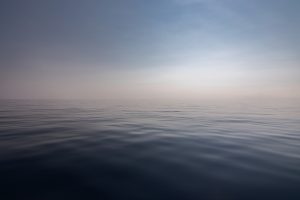
Floatation centers are alternative health and wellness businesses that have one or more float tanks for their clients’ use. Float tanks are tanks filled with skin-temperature warm water mixed with enough Epsom salt to allow a person’s body to float. The temperature of the water makes it imperceptible to the person floating in the tank. The tank is sound-proof and pitch-black blocking out any outside stimuli. These tanks are sometimes called sensory deprivation tanks or isolation tanks.
In the 1950s, interest in the brain’s reaction to sensory deprivation began among neuroscientists. Some scientists believed that the brain would shut down into a coma-like state. Others believed that the brain would still remain active, just looking inward for stimulation. Neuroscientist John C. Lilly built the first float tank in 1954 at the National Institute of Mental Health Laboratory in the Virgin Islands; however, unlike modern floatation tank clients, the subjects of Lilly’s experiments were submerged underwater and needed to wear divers helmets with tubes to breathe. The results of the experiments proved that the brain does not go into a comatose state when deprived of stimuli. Subjects reported feeling energized and motivated to fulfill their highest life potential afterward. This led Lilly to build more float tanks in research centers in the United States.
In the early 1970s, Lilly partnered with Glenn and Lee Perry to develop a commercially available float tank that people could have in their homes. In 1979, the first floatation center opened in Beverly Hills, California with 5 of these tanks. The business was a success and floatation centers opened across the United States. Business boomed in the early 1980s. Now called Restricted Environmental Stimulation Therapy (REST), research continued although some scientists found it difficult to get funding. Lilly’s reputation for being eccentric and the 1980 cult-classic movie Altered States, inspired by Lilly’s life, led some to believe that floatation tank research was “a hippie fad.” By the mid-1980s, AIDS was taking a toll on the population and on floatation center businesses. Most went out of business. Then in the 2000s and especially the 2010s, floatation centers saw a resurgence in popularity as alternative health and wellness practices became more available and acceptable.
According to some studies, after float sessions, patients experience lower levels of stress-related hormones.1 Lower blood pressure and improvements in mood, pain, and muscle tension have also been reported. In some cases, effects last for several months. Floating has been shown to lessen stress-related pain, anxiety, and depression. Patients suffering from various conditions such as addiction, arthritis, fibromyalgia, and post-traumatic stress disorder may also be helped by floating.
Today’s market size shows the number of floatation centers in the United States in 2011 and 2019. California had the highest number of floatation centers in 2019, 70, followed by New York and Florida (tied with 29 each), Texas (20), Pennsylvania (18), and Illinois (17). In a majority of cases, floatation centers offer other services such as massage, infrared saunas, reiki, yoga, meditation, sound and light therapy, counseling services, and acupuncture. Despite this, according to a survey conducted by Float Tank Solutions, more than three-quarters of these businesses earn most of their income from floating. In 2019, the average annual revenue from a float tank totaled $41,939.
1 Float sessions last a minimum of 30 minutes at floatation centers.Geographic reference: United States
Year: 2011 and 2019
Market size: 85 and 462, respectively
Sources: Mandy Oaklander, “Float Hopes, Moods Lift,” Time Special Edition: Mental Health a New Understanding Reissue, 2019, pp. 50-53; “Sensory Deprivation Tank Locations by Region,” Floatation Locations available online here; 2019 State of the Float Industry, Float Tank Solutions available online here; “Float HIstory,” True REST: The Science of Feeling Great available online here.
Image source: Dimhou, “sea-water-ocean-quiet-horizon-3652697,” Pixabay, September 5, 2018 available online here.
